#angiosperm
Text

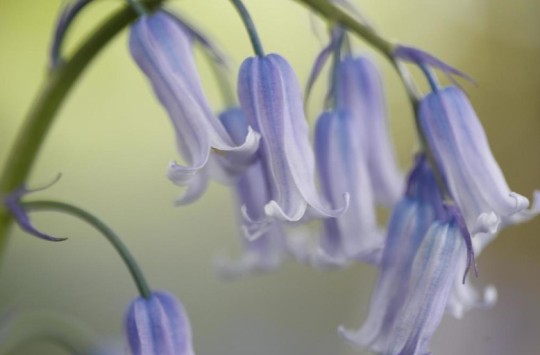
Common Bluebell (Hyacinthoides non-scripta)
Family: Asparagus Family (Asparagaceae)
IUCN Conservation Status: Unassessed
Adapted to life in deciduous forests with dense canopies that limit the degree to which low-growing plants can access sunlight, Common Blubells survive by rapidly developing and reproducing during the early spring before the trees around them develop their leaves. In the later spring and early summer, as taller competing plants develop leaves, the flowers, stems, leaves and even roots of members of this species wither as they enter a dormant state until the following spring, with only an onion-like subterranean bulb, packed with sugars produced through photosynthesis during the non-dormant period, remaining; come next year's spring, the sugars in the bulb are used to facilitate the rapid development of new roots and leaves, allowing the bluebell to repeat the process year after year. Common Bluebells can reproduce both sexually (producing 5-12 small, pale-purple bell-shaped flowers that droop notably to one side when in bloom, with each flower possessing pollen-producing "male" organs and pollen-receiving "female" organs, with any flower that is pollinated developing into a small seed-filled pod that drops its seeds as the plant goes dormant) and asexually (with new but genetically identical bulbs, known as "daughter bulbs" developing as offshoots from the sides of an existing mature bulb, known as a "mother bulb",) and as they thrive in shady deciduous forests and are unable to easily disperse their seeds or bulbs over any great distance, it is not unusual for the understory of a forest that supports members of this species to be completely dominated by them during the spring - such forests are referred to in some regions as "bluebell woods'."
--------------------------------------------------------------------------
Image Source: https://www.inaturalist.org/taxa/56132-Hyacinthoides-non-scripta
#common bluebell#Common Bluebell#bluebell#botany#biology#angiosperm#angiosperms#flowering plants#flowers#plant#plants#wildlife#European wildlife#flower
105 notes
·
View notes
Text
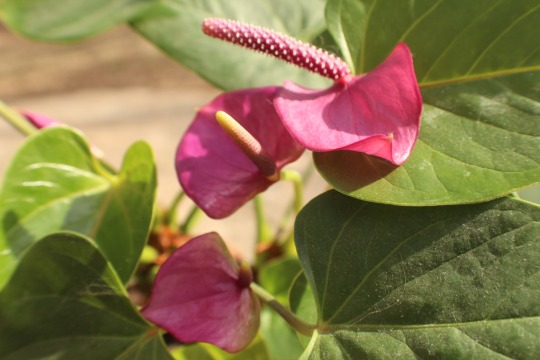
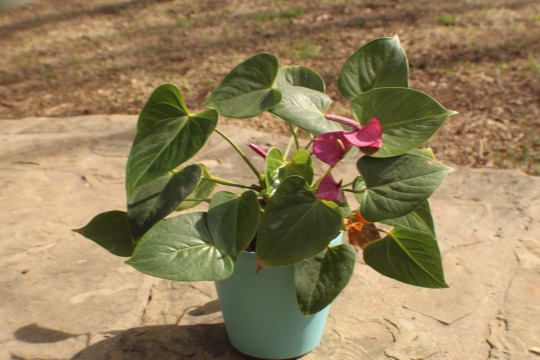
Flamingo Flower/ Anthurium
#plants#plant#plantblr#succulent#succulents#cactus#potted plants#houseplants#cacti#cacti and desert plants#anthurium#spadix#flowers#floral#blumen#Blume#flamingo flower#angiosperm#flowering plants
14 notes
·
View notes
Text
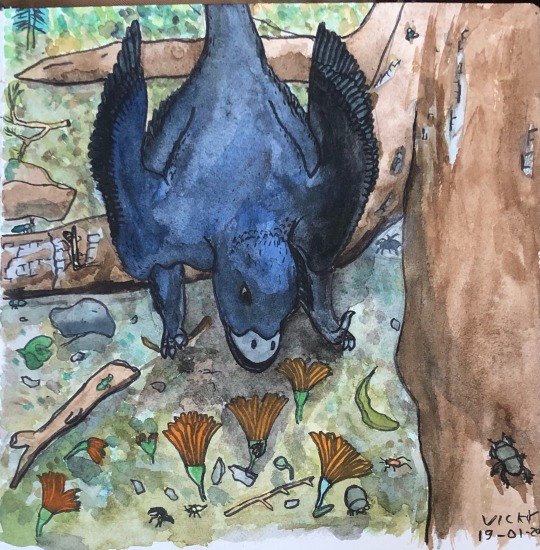
A Microraptor investigates some strange colourful plants - the first flowers she's ever seen.
#microraptor#flowers#dromaeosaur#theropod#dinosaur#cretaceous#paleoart#my art#palaeoblr#paleoblr#insect#spider#cw: bugs#cw: spiders#lingyuananthus#angiosperm
138 notes
·
View notes
Text
The Classification Of Plants
The Classification Of Plants
The Classification Of Plants
Classification Of Plants The Plant Kingdom Is Divided Into Two Sub-Kingdoms, Thallophyta And Embryophyta.
Under Thalophyta – Algae , Fungi , Bacteria Are Studied .
Algae
They Are Autotrophic , That Is, They Make Their Own Food.
Algae Grow On Fresh Water (Rivers, Ponds, Springs Etc.) And Fresh Water (Sea Water), Mountains, Trees,…
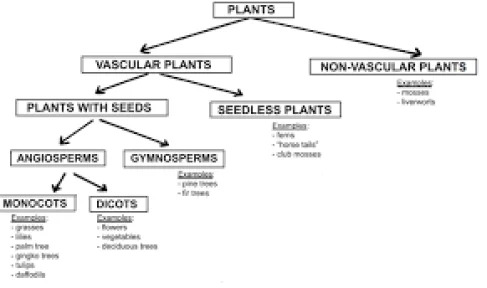
View On WordPress
#Algae#Angiosperm#Bacteria#Biology#Bryophyta#Embryophyta#Fungi#Gymnosperm#Pteridophyta#Thallophyta#The Classification Of Plants
0 notes
Photo

Thistle by Wade Tregaskis https://flic.kr/p/2oMwy9K
0 notes
Text
In contrast, the haploid cells produced by meiosis in plants differentiate into spores – microspores (male) or megaspores (female) (Figure 21.1).

"Plant Physiology and Development" int'l 6e - Taiz, L., Zeiger, E., Møller, I.M., Murphy, A.
#book quotes#plant physiology and development#nonfiction#textbook#plant cells#cell differentiation#gametes#haploid#meiosis#spores#microspore#megaspore#pollen#gametophyte#angiosperm#life cycle
0 notes
Photo
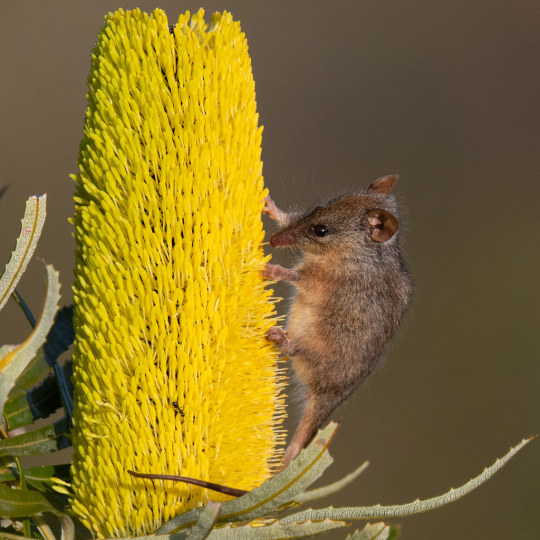
Honey possum (Tarsipes rostratus) drinking nectar from candlestick banksia (Banksia attenuata) flowers in Western Australia
John Anderson
3K notes
·
View notes
Text

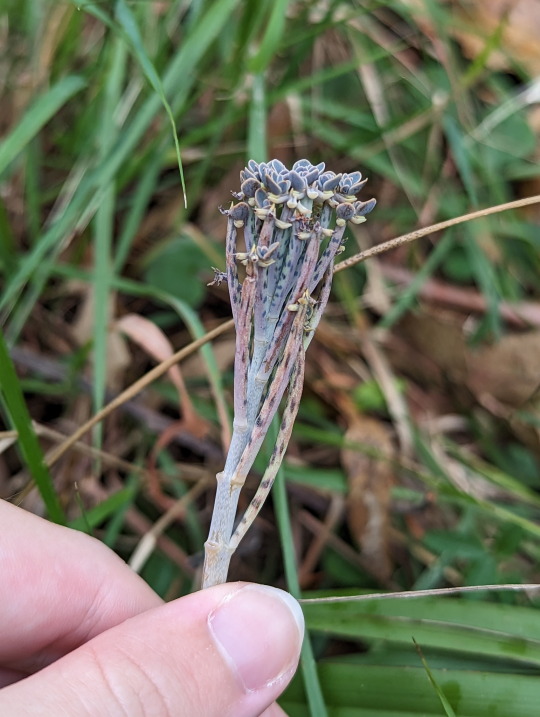
Mother-of-Millions
Kalanchoe delagoensis
20/03/23 - NSW
#Kalanchoe delagoensis#Mother-of-Millions#Kalanchoe#Kalanchoes#Crassulaceae#stonecrops#Magnoliopsida#Dicots#Angiospermae#angiosperms#Flowering Plants#flowers#Tracheophyta#Vascular Plants#Plantae#Plants#botany
349 notes
·
View notes
Text
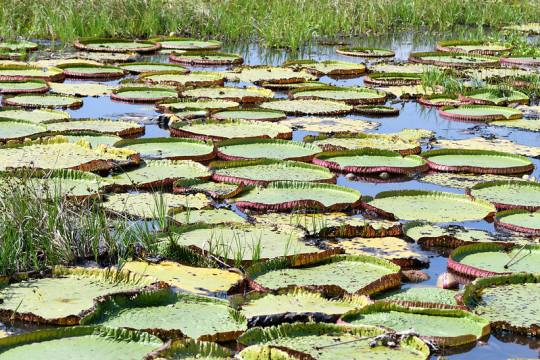
Uape Jacana giant water lilies (Victoria amazonica) in Mato Grosso, Brazil.
by Brian Henderson
#uape jacana#giant water lilies#water lilies#plants#victoria amazonica#victoria#Nymphaeaceae#Nymphaeales#angiosperms#Tracheophytes#plantae
81 notes
·
View notes
Text
i’ve been trying to identify the plant ratio is holding and i think it’s an olive branch (?) and we know the image of the dove with the olive branch so my man is a peaceful soul
#* ✦ 𝐈. ❮ ooc ❯ ⸻ ❝#it could totally be something else honestly#if anyone knows pls tell me#i just woke up the brain isn’t on yet#ratio an owl and a dove tho#he’s metamorphosising#i do think he wants to bring about peace by wiping out ignorance#otherwise it’s totally a medicinal plant and i just didn’t study enough angiosperms to work out what it is
15 notes
·
View notes
Photo

Fireweed (Chamaenerion angustifolium)
Family: Evening Primrose Family (Onagraceae)
IUCN Conservation Status: Least Concern
Growing rapidly and reproducing very frequently, Fireweed thrives in areas that have been recently cleared of other plants due to forest fires or other disruptive events, earning it its name. Widely distributed throughout the northern hemisphere, it is a textbook example of a pioneer species (the first species of plants, or other non-motile organisms, to spread onto land that has been cleared of its previous occupants) ; unable to compete with taller, more “aggressive” species of plants that will have taken over older habitats, its seeds remain dormant in soil for years at a time, while adult plants may remain in small numbers in clearing or frequently-disturbed forest edges, or may be entirely absent. When a fire occurs the seeds respond to the heat and begin to germinate, allowing young individuals to emerge after the fire has subsided and most potential competitors have been eliminated. After sprouting, young Fireweed can reach considerable heights (potentially growing to be up to 2.5 meters/8ft tall, although in areas with limited resources they may never exceed 0.5 meters/1.6ft) and, upon reaching maturity, will develop numerous 5-petaled pink flowers each year that, once pollinated, develop into long strings of tiny seeds covered with cottony parachute-like structures that allow them to be carried away from their parent on the wind, settling in new ground where they may later germinate. Members of this species can live for several years, but as slower-growing but taller and more competitive plants gradually return to a cleared area Fireweed populations will gradually decrease as their access to sunlight and soil nutrients is reduced. As such, once an area has “healed” from the disturbance that cleared it, adult Fireweeds become rare once again, but the seeds they produced when more abundant remain dormant in the soil until another disturbance provides them with an opportunity to grow. In human-influenced habitats faced with near-constant disturbance (such as railways or roadsides,) it is possible for adult Fireweeds to remain abundant permanently, and the ease at which members of this species adapt to urban environments, combined with its impressive hardiness, has led to it becoming somewhat prominent in folklore, featuring on the flag of the Canadian territory of Yukon, being referenced in the works of Rudyard Kipling and J.R.R Tolkien, and earning the name “Bombweed” in the UK after large numbers of Fireweeds were observed growing in the ruins of bombed-out buildings leveled during World War II. Ecologically, various species of deer, bears and hawk-moths are known to feed on the leaves, flowers, nectar and seeds of this species.
--------------------------------------------------------------------------
Image Source: https://www.inaturalist.org/taxa/564969-Chamaenerion-angustifolium
#fireweed#Chamaenerion angustifolium#plant#plants#flowering plant#flowering plants#angiosperms#angiosperm#biology#botany#wildlife#African wildlife#north american wildlife#Asian Wildlife#European wildlife#ecological succession#ecology#flower#flowers
64 notes
·
View notes
Text
Before Monocots and Eudicots: The Basal Angiosperms
Originally posted at my blog at https://rebeccalexa.com/basal-angiosperms/
One of the nice things about living on a lake is that I can go kayaking whenever I feel like it–or, more realistically, when I have the time to do so. I hope someday to be the kind of person who can start every day with a serene glide across the water, but for now I take my opportunities as I’m able to. One of my favorite things about the experience is getting to start and end my journey by paddling through a huge patch of western yellow pond lily (Nuphar polysepala, previously categorized as a subspecies of Nuphar lutea). And it was this plant that was my introduction to the concept of basal angiosperms.
See, when I have a species I really like, I spend time researching it. So I decided to dig into the natural history of this plant, one of eight extant species in the genus. In addition to finding out that the seeds are edible, and the roots are a traditional medicine, I also learned that they are an example of basal angiosperms–something that piqued my interest in tracing the evolution of various beings.

Nuphar polysepala
Basal angiosperms are essentially the oldest orders of flowering plants. Prior to the first angiosperms, plants either reproduced with cones like today’s conifers and other gymnosperms, or through spores and gemmae as with bryophytes (which may also reproduce through fragmentation.) Flowers were a new mutation that used visually appealing structures and scents to attract animals as vehicles for spreading pollen to other members of the same plant species. Flower-producing plants–the angiosperms–have since exploded into countless species, with about 300,000 known species in existence today. The most ancient lineages are known as ANITA grade.
ANITA is short for a group of five orders: Amborellales, Nymphaeales, Illiciales, Trimeniaceae, and Austrobaileya. More recently Illiciales and Trimeniaceae have been folded into Austrobaileya, leaving the acronym shorter at ANA, though some recent papers persist in using ANITA.
Angiosperms are commonly thought to have evolved during the early Cretaceous Epoch, around 135 million years ago, though pollen that may be angiosperm in origin was found dating back to about 250 million years ago. Soon after angiosperms appeared, their lineage began to branch out. The earliest branches to diverge were the basal angiosperms. Amborella trichopoda is the sole representative of the oldest branch; all other flowering plants share the same common ancestor from which Amborella‘s ancestors diverged.

Amborella trichopoda. By Scott Zona, CCA-2.0
Amborella lives all the way on the other side of the planet from me, on the island of Grand Terre in New Caledonia, which means my chances of getting to see it in person are pretty slim. However, there are lots of basal angiosperms out there, and they have some pretty interesting qualities.
If you learned about plants in middle school or junior high, you very likely learned about “monocots and dicots” as being the two main divisions of flowering plants. In truth, these two are joined by the basal angiosperms, and a fourth group, the Magnoliids. These latter Magnoliidae are the next-oldest group of angiosperms, and they and the basal angiosperms both pre-date the emergence of the monocots and dicots (now known as eudicots). Species in these older lineages have physical traits of both the monocots and eudicots, giving a glimpse of what flowers were like before these more numerous groups appeared. This also shows that monocots and eudicots have a common ancestry, rather than one evolving from the other.
The Nymphaeales, of which my beloved western pond lilies is a part, are a good example. If you examine the structure of a stem of a pond lily, it looks very much like that of a eudicot. Rather than having vascular tissue distributed throughout the the stem’s tissue as with a monocot, the vascular bundles are arranged in a circle like in a eudicot. But the stem lacks the eudicots’ cambium, which creates xylem and phloem.
Like the monocots, Nymphaeales flower parts are arranged in multiples of three, whether petals, stamens, etc. However, this does not mean the basal angiosperms are the direct ancestors of monocots. Compare Amborella which has varying numbers of tepals (the forerunner of sepals and petals), stamens, carpals and other parts depending on whether the flower is male or female. Neither sex of Amborella displays a trimerous (parts in multiples of three) flower. And, just for the record, eudicot flower parts generally show up in multiples of four or five.
The relationships among these various groups of flowering plants aren’t just dependent on the physical characteristics, though. A lot of what we’ve been learning lately about basal angiosperms comes through genetic research. For example, a recent debate concerns whether Amborella is the oldest basal angiosperm, or whether Amborella and the Nymphaeales together are the very oldest lineages, closer related to each other than the rest of the angiosperms.

Kadsura japonica
If you live in Australia, east Asia, or the Caribbean, you have species from the Austrobaileya in your region. Austrobaileya scandens is the only member of its genus and family, and is located in northeast Queensland. The Schisandraceae and Illiceaceae are woody plants found in tropical areas in east Asia and the Caribbean. While in tropical Southeast Asia, you might look for the Trimeniaceae, various species which may also be found in eastern Australia and the Pacific Islands. Amborella, of course, is limited to New Caledonia.
The Nymphaeales includes the better part of a hundred species, including the various water lilies, fanworts, and similar plants. They are quite widespread, found commonly (to include as invasive species in some cases) on all continents except for Antarctica.
As for me, I will continue to enjoy the presence of my local western yellow pond lilies. Now that I have a deeper understanding of their evolutionary history, I can better appreciate what unique neighbors they are!
Did you enjoy this post? Consider taking one of my online foraging and natural history classes, checking out my other articles, or picking up a paperback or ebook I’ve written! You can even buy me a coffee here!
#long post#botany#plants#evolution#prehistory#flowers#angiosperms#nature#ecology#science#scicomm#science communication
225 notes
·
View notes
Note
may i hear about ivy the oc
I will gladly tell you about her :3
Ivy Aroid is the daughter of a fallen clan of nobles in a monarchical aristocracy. The world this character exists within is one domineered by gods, or more plainly and literally, immortals in charge of governing the metaphysical wellbeing of the universe, but that’s its own lore dump. In short, the world is split into nation-like factions that hundreds of different gods have individual claim over. The citizens of each faction are bound by social expectation to follow their patron god’s doctrine and organize themselves according to the ideals of said god. In Ivy’s case, that doctrine and those ideals entail a social structure that splits a so-called Burden of Coexistence that splits the population into two classes of people: Aristocrats who may become either a Scholar or a Warrior, and Tradesmen who can become a Healer or Artisan (these four categories are a universal standard, but how a god interprets which kinds of work fall under which label is completely up to their whim, as is the manner in which the classes are implemented in society).
Ivy’s family was one of many who fell off politically following a long and complicated ordeal with what was functionally the ruling clan of monarchs of a few generations past. The clan’s rule has left the country (ahem faction) in economic and social disarray, and Aristocrats are all vying to gain power in the midst of a power vacuum opening up. The Aroids are particularly aggressive in their pursuit and the family heads have abused their children to that end, Ivy included. But she’s intelligent and, in her adolescence, grows to become keenly aware of her situation. So she starts to play a character— that of a cunning, manipulative, unfeeling agent who would do everything in her power to climb the ranks. It’s a bid to reclaim what she’s been through; convincing herself she chose to be a bad person and reclaiming autonomy over her survival response, which was to distance herself from people and become the perfect pawn for her clan’s re-ascension. To this end she did a lot of reprehensible things, including but not limited to, blackmail, sexual exploitation, stealing, lying, cheating, and making threats of emotional or physical violence to her interpersonal circle. She lives in a society that is cruel by nature and she embodies that cruelty perfectly, as a medley of tragedy and hurt that can only exist alongside one another. She does what she must to climb the ranks for both herself and her clan, but the line between what she must do and what she wants to do are blurry and indefinite.
And then comes around the congregational season, where all aristocrats are invited to the oldest temple in the nation faction for a ball commemorating a celestial event in which the two moons are both visible and full at the same time— something that only occurs once every other year. It’s at this event that Ivy meets Yeonzhun, the person who would change the trajectory of her life forever. They hit it off really well, since they shared a lot of similar views on politics and had a lot of commonalities outside of their politics as well. Mostly, Ivy was drawn to him/her (Yeon is markedly a transgressor of the binary so regardless of the spiritual canon I use both she/he for her) for reasons that vaguely border on attraction but ultimately I have elected never to clarify. They continue to exchange letters with each other as they lived their lives, Yeon wrapping up military academy and Ivy acting as a subordinate diplomat for another, more powerful clan.
At this point, I should mention that Ivy has established many connections all over, but her primary contacts are illicit: the coven of rebels who seek to overthrow the regime of the gods and overturn the world order so that mortals have complete self-determinative capacity. This coven extends worldwide and is comprised of a mix of Rogues (a fifth category of person, who, loosely defined, are those who have abandoned their faction’s subservience to their patron and were exiled as punishment), descendants of a “cursed” bloodline (heavy quotes there because whether the bloodline is actually cursed or not is up for interpretation), and those with status in their respective factions who secretly wish to abolish the status quo. This may initially seem at conflict with Ivy’s character, since it goes against the grain of her intended to be a symbol of the cycle the people are trapped within, but consider that she is foremost contextualized by her desire to have control over her role in society. That she wants tangible authority and power to mitigate her internalized anxieties of being deprived of control is not necessarily at odds with the idea that she contends with guilt and shame over having done bad things in the name of a poorly justified cause. She doesn’t enjoy being trapped in the cave any more than the next guy.
After several exchanges with Yeon over letters, she one day asks if Yeon would be interested in joining the rebel forces with her. Of course, she was aware of the implications of roping Yeonzhun, an aristocrat who by far outranked her and had her own slew of baggage, into something like the rebellion, but there was just too much she admired and loved about him that she felt it would be disingenuous to not reveal this side of herself to her. Yeonzhun accepted in a heartbeat, and after receiving the reply, Ivy basically swore a vow of servitude to Yeonzhun, to help her achieve what she herself had suffered through years of agony for. Yeonzhun was not just a genuine companion to Ivy; he began to epitomize the concept of hope and strength for her. There was so much that she lamented or regretted doing and Yeonzhun was the outlet for that self-hatred. Symbolically, and literally, Yeonzhun became Ivy’s new patron god.
It’s the kind of romanticism you’d write a line like “If the heavens were a tree, I would grab the trunk and shake the branches to fell the fruits of my sins for you” for.
And uh… commit sins she does! Because once Yeonzhun comes out of the military academy and Ivy found an opportunity to resign from her position, the two become a pretty infamous duo. And the closer they grew in person and the older they aged together, Ivy came to realize the one thing that kept Yeonzhun from snapping was her stubborn belief in the goodness of people. Ivy did not ever once think less of her for this in spite of her experiences. Rather, it was a trait that she considered to be one of Yeonzhun’s most admirable qualities. But Yeonzhun is not a politican like Ivy, she’s a fighter. A Warrior. It’s a point where their similarities dissipate into differences. And Ivy, with all of her jaded optimism, who at this point truly only desired for Yeonzhun’s ideals to become a reality as it represented the best possible version of Ivy’s (at least, in Ivy’s perspective), came to the conclusion that the best way to help Yeonzhun realize his goals was to betray him and face the consequence of certain vengeance/death by his hands.
So that’s exactly what Ivy did. She betrayed him by leaking to some of the brass she was connected to that Yeonzhun was part of the rebellion, and should thusly be exiled from the Aristocrat class as punishment. In the months after Yeon’s exile, Ivy mostly retreated into herself and spent the days contemplating what she’d done with her life and how she ended up here. In the end, she did exactly as her parents wanted: to rise up the ranks and bring the Aroid clan back into prominence. She basically set that motion into stone with her betrayal of Yeonzhun, since it earned her a lot of respect, awe, and fear. But she also accomplished the complete opposite of her efforts to defy that initial compulsion, which was to play the game for herself and herself only, by tying her whole being to Yeonzhun. And, of course, when Yeonzhun makes a return leading a group of rebels driven by the shared anger of being sold out by who they all thought was a close comrade, Ivy’s throat is cut by Yeonzhun himself.
Such is the entire story summed up neatly. You will notice that it’s long, so I had to cut out basically every detail related to Yeonzhun to keep it a somewhat reasonable length. But knowing Yeon’s deal makes Ivy’s fascination and infatuation with her very clear I promise. It all makes sense
#jin responds#oc tag#btw i took ivy’s name from the devil’s ivy plant#they are distinguished by their ‘’shy flowering nature’’ (so titled by wikipedia)#due to the fact that they have the genes of a flowering plant or angiosperm but are genetically wired not to be able to express that trait#smiles at you
19 notes
·
View notes
Text
the constant thought at the back of my mind that i dont belong here because people are so fucking stupid
#i am trying to study deeep into angiosperms embryology and a girl comes up to me and asks hey are sunflowers dicot or monocot#and im studying so much so deep into it and shes asking me this#shut up!!!!!!!! shut the fuck up tumhe admission kisne diya#i actually dont belong here tbh ive just accepted#still nothing beats first day here i asked this girl what her major was and she asked me whats a major#i love that you are so unaware girl but karne kya aayi ho yaha
18 notes
·
View notes
Text
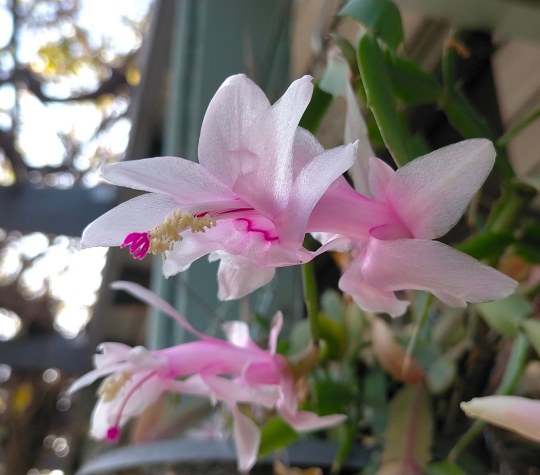
Schlumbergera sp.
14-JUN-2023
Melbourne, Vic
#australia#victoria#melbourne#zygocactus#flowers#pink flowers#angiosperms#caryophyllales#cactaceae#cactoideae#rhipsalideae#schlumbergera
16 notes
·
View notes
Photo
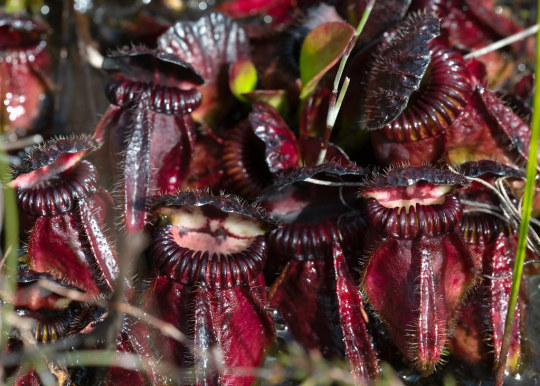
Albany pitcher plant (Cephalotus follicularis) in Western Australia
John Anderson
523 notes
·
View notes